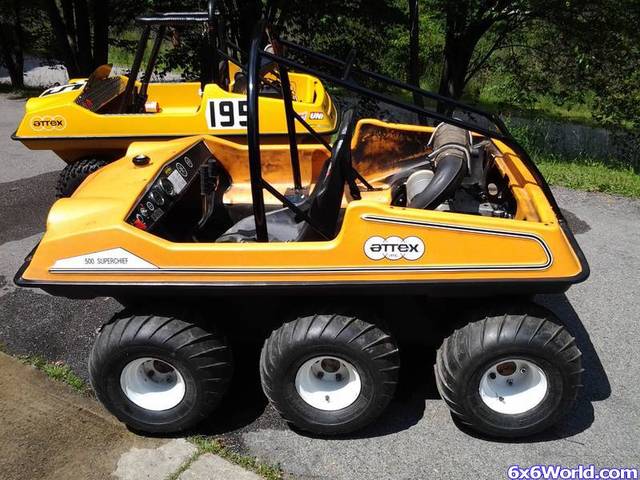Don't fret Brett, we'll get you sorted out.
Both the ST/295 and the 252 Colt are a fine place to start a racer build. Correcting the "top Attex specialist" above, both of these machines are T-20 based and have #50 drive chain and have 1" axles.
(As a side note, the Baker Hill transmissions and #40 chain work almost too well in racers. Jim Gerber (the NEEDT 2 stroke stock and mod points leader this year) and Don Kinyon (2-stroke stock runner up) are both running Chaparral G50B engines with Baker Hill 6000s and #40 drive chain.)
If you want to just get on the track, the majority of stock components on the 295/252 will work just fine. In my opinion (and I think others will agree) the best ratio for low-mid power machines seems to be a 26 tooth primary sprocket with the stock T-20 sprocket. It's a great balance of low end and top speed with all other elements being equal. There are a few different classes that you can enter depending on what engine or carburation you're going with. I won't dive into the specifics, so here's a link to the 2016 rules:
http://www.6x6world.com/forums/6x6-atv-racing/34179-2016-race-rules.html
The Harbor Freight tubing bender is a good start for building up a cage. I've owned one for about 20 years and it works fine for cages. I've been using regular welded seam pipe (not tubing) for my cages, only because I'm cheap and doubt the weight/strength differential causes a big factor in my race victories. I usually crash or burn up well before the finish line.

The big key with the the HF bender is to go slow. Lay out the pattern you want on a sheet of plywood and make dozens of small bends so as not to crease the pipe. Make a tiny bend (5-10 pumps?), move the pipe in the bender a couple inches, and bend again. It's a pain, but I'm at the point that I can get a decent main hoop bent up in about an hour or so.
Yank out the stock floor pan, and mount your bucket seat as low as it can go while still passing the rods between the laterals (steering sticks) and T-20 beneath it. This to be the limiting factor from the seat mounting standpoint. You can move the laterals forward by mounting them on top of the frame and lengthening the rods that connect to the transmission. Put a bend in the laterals with the pipe bender to get the stick position more comfortable and allow plenty of movement with out punching the dash.
Three of my racers have polyethylene floor pans to meet the "chain guard" requirement. it's just a flat piece of black poly that's been cut out around the seat and mounted above the chains with standoffs. You can make more discrete chain guards if you don't want to go "full floorpan". Honestly, if you're over four feet tall, you'll understand how difficult it is to get your foot in a front chain once you sit in the machine, but hell; safety first, right?
A stock, well tuned 440 JLO Cuyuna or G50B Chap with stock clutching and stock 1" bolt-through axles is a mighty good place to start. Most of the components in our machines are well over 40 years old at this point, so the key is to make sure that the sprockets and wheel hubs don't have play in them when bolted together. If your axles are in rough shape (worn bolt holes), just get some 1" 4140 steel and drill holes in them for new axles. Make sure your sprockets aren't junk. Stay away from pitted or shark-toothed sprocket teeth. Use good chain. Diamond and US Tsubaki are reliable sources. I think the best advice I can offer is to go through all of your parts and make sure everything is in good shape and repair, replace what's necessary. Don't be concerned with huge pipes and stainless chrome exhaust tips
(I've only ever seen one, nationally...). Once you feed the bug the first time and things go well, you can worry about upgrading to bigger axles/bearings if you think it's necessary.
I have a few pictures in my gallery from the build-up of GeoJem's racer in 2009 that shows the cage coming together and how it's tied into the frame. This cage is really too simple and still needs to be reinforced, but she's a bit more conservative driver than I.
Racer build 2009... - Amphibious ATV Pictures
Also, here's a shot of JP's racer frame. Not much different than what I usually build, but this one came with a Penicillin injector.


Good luck!
give me a shout, send me a message. I'm sure I opened up a can of worms here but willing to learn...Thanks guys... Brett from Harrisburg






 Reply With Quote
Reply With Quote




 The big key with the the HF bender is to go slow. Lay out the pattern you want on a sheet of plywood and make dozens of small bends so as not to crease the pipe. Make a tiny bend (5-10 pumps?), move the pipe in the bender a couple inches, and bend again. It's a pain, but I'm at the point that I can get a decent main hoop bent up in about an hour or so.
The big key with the the HF bender is to go slow. Lay out the pattern you want on a sheet of plywood and make dozens of small bends so as not to crease the pipe. Make a tiny bend (5-10 pumps?), move the pipe in the bender a couple inches, and bend again. It's a pain, but I'm at the point that I can get a decent main hoop bent up in about an hour or so.






